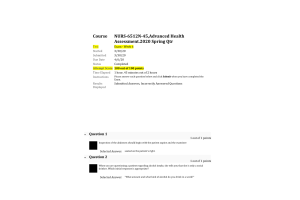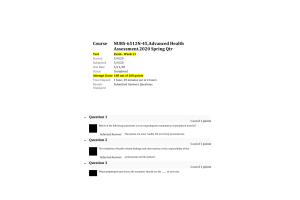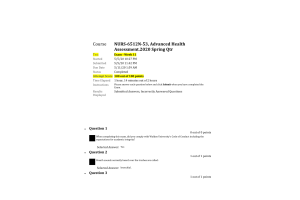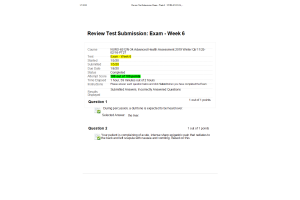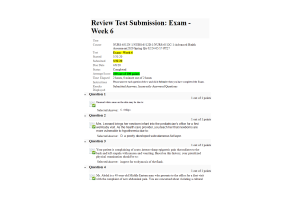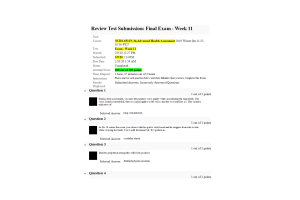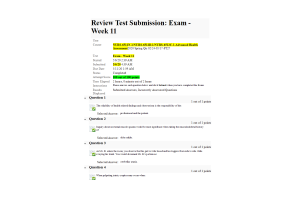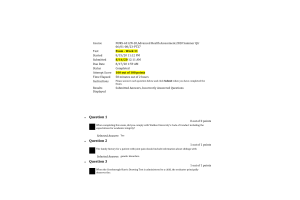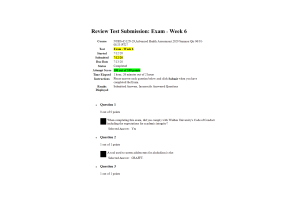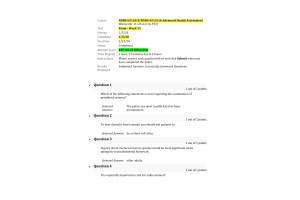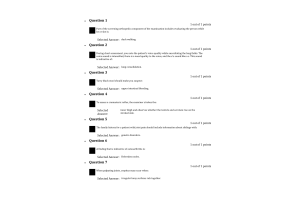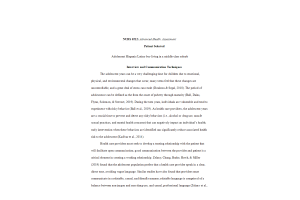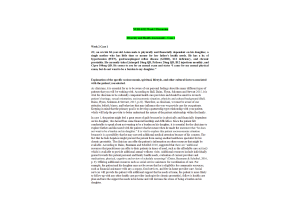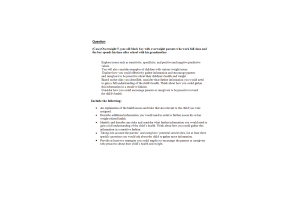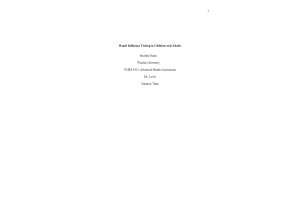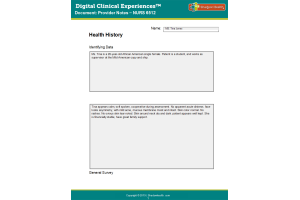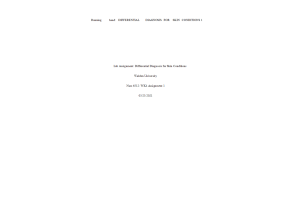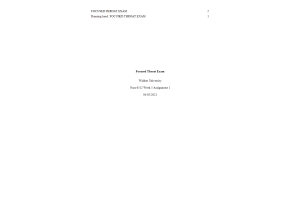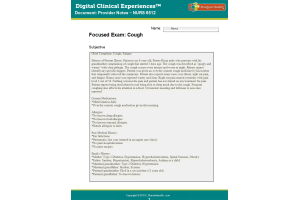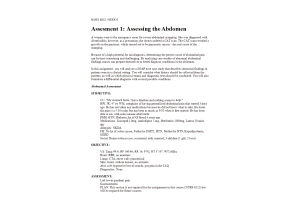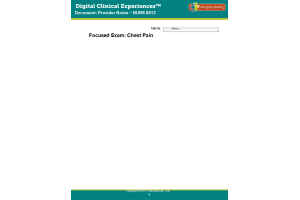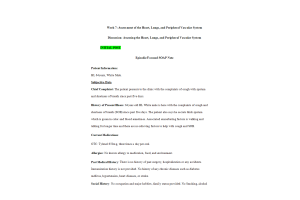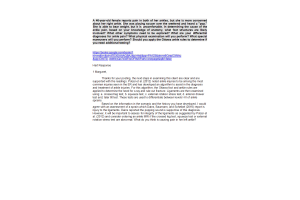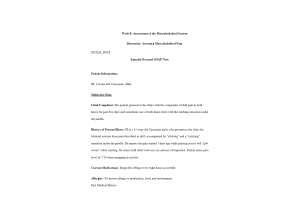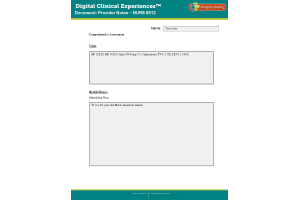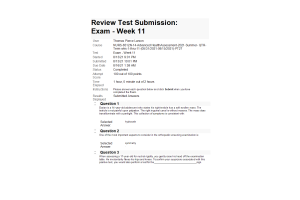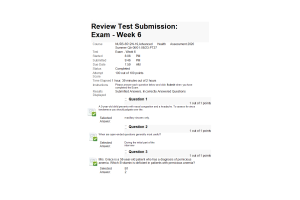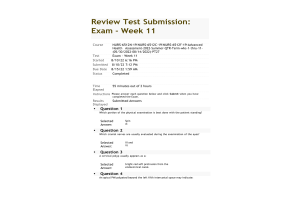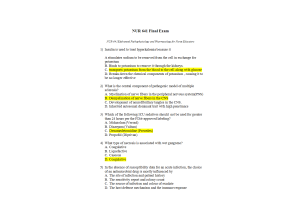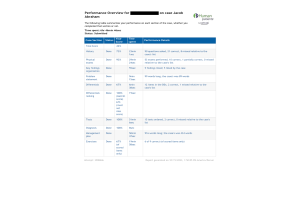NURS 6512N-29 Week 11 Final Exam; 100 out of 100 Points
- $49.00
NURS 6512 Advanced Health Assessment
and Diagnostic Reasoning
1. Question: Which portion of the physical examination is best done with the patient standing?
2. Question: To assess spinal levels L2, L3, and L4, which deep tendon reflex should be tested?
3. Question: Nerves that arise from the brain rather than the spinal cord are called:
4. Question: While interviewing a 70-year-old female clinic patient, she tells you that she takes ginkgo biloba and St. John's wort. You make a short note to check for results of the:
5. Question: The finger-to-nose test allows assessment of:
6. Question: The difference in blood pressure readings between the right and the left arms is considered normal up to _____ mm Hg.
7. Question: Functional assessment is most important during the examination of a(n):
8. Question: During a routine prenatal visit, Ms. T. was noted as having dependent edema, varicosities of the legs, and hemorrhoids. She expressed concern about these symptoms. You explain to Ms. T. that her enlarged uterus is compressing her pelvic veins and her inferior vena cava. You would further explain that these findings:
9. Question: Palpation of epitrochlear nodes is part of the:
10. Question: Which one of the following techniques is used to detect a torn meniscus?
11. Question: Cranial nerve XII may be assessed in an infant by:
12. Question: Loss of immediate and recent memory with retention of remote memory suggests:
13. Question: The family history for a patient with joint pain should include information about siblings with:
14. Question: When palpating joints, crepitus may occur when:
15. Question: A red, hot swollen joint in a 40-year-old man should lead you to suspect:
16. Question: Inquiry about nocturnal muscle spasms would be most significant when taking the musculoskeletal history of:
17. Question: You are conducting a preparticipation physical examination for a 10-year-old girl with Down syndrome who will be playing basketball. She has slight torticollis and mild ankle clonus. What additional diagnostic testing would be required for her?
18. Question: In the most effective percussion technique of the posterior lung fields, the patient cooperates by:
19. Question: A 12-year-old boy relates that his left scrotum has a soft swollen mass. The scrotum is not painful upon palpation. The left inguinal canal is without masses. The mass does transilluminate with a penlight. This collection of symptoms is consistent with:
20. Question: An apical PMI palpated beyond the left fifth intercostal space may indicate:
21. Question: The checkout station for preparticipation physical evaluation (PPE) is critical because at this point:
22. Question: If a patient cannot shrug the shoulders against resistance, which cranial nerve (CN) requires further evaluation?
23. Question: You are conducting a clinical breast examination for your 30-year-old patient. Her breasts are symmetrical with bilateral, multiple tender masses that are freely moveable with well-defined borders. You recognize that these symptoms and assessment findings are consistent with:
24. Question: The Mini-Mental State Examination should be administered for the patient who:
25. Question: The physical assessment technique most frequently used to assess joint symmetry is:
26. Question: The reliability of health-related findings and observations is the responsibility of the:
27. Question: You are examining Mr. S., a 79-year-old diabetic man complaining of claudication. Which of the following physical findings is consistent with the diagnosis of arterial occlusion?
28. Question: If pitting edema is unilateral, you would suspect occlusion of a:
29. Question: For purposes of examination and communication of physical findings, the breast is divided into:
30. Question: Your patient's chief complaint is repeated pencil-like stools. Further examination should include:
31. Question: Facial muscle or tongue weakness may result in:
32. Question: The musculoskeletal examination should begin when:
33. Question: You are initially evaluating the equilibrium of Ms. Q. You ask her to stand with her feet together and arms at her sides. She loses her balance. Ms. Q. has a positive:
34. Question: The best way to ease the apprehension of a 3-year-old child before a physical examination is to:
35. Question: The best way to ease the apprehension of a 3-year-old child before a physical examination is to:
36. Question: Breath sounds normally heard over the trachea are called:
37. Question: You are interviewing a 20-year-old patient with a new-onset psychotic disorder. The patient is apathetic and has disturbed thoughts and language patterns. The nurse recognizes this behavior pattern as consistent with a diagnosis of:
38. Question: While collecting personal and social history data from a woman complaining of breast discomfort, you should question her regarding:
39. Question: When conducting a geriatric assessment, basic activities of daily living (ADLs) include:
40. Question: Which cranial nerves are usually evaluated during the examination of the eyes?
41. Question: A patient you are seeing in the emergency department for chest pain is suspected of having a myocardial infarction. During the health history interview of his family history, he relates that his father had died of "heart trouble." The most important follow-up question you should pose is which of the following?
42. Question: The spread of the impulse through the ventricles (ventricular depolarization) is depicted on the ECG as the:
43. Question: The rectal past medical history of all patients should include inquiry about:
44. Question: Recent unilateral inversion of a previously everted nipple suggests:
45. Question: Tarry black stool should make you suspect:
46. Question: Nancy Walker is a 16-year-old girl who presents to the clinic with complaints of severe, acute chest pain. Her mother reports that Nancy, apart from occasional colds, Nancy is not prone to respiratory problems. What potential risk factor is most important to assess with regards to Nancy's current problem?
47. Question: You are performing a two-point discrimination test as part of a well physical examination. The area with the ability to discern two points in the shortest distance is the:
48. Question: An ophthalmoscopic eye examination involves:
49. Question: An idiopathic spasm of arterioles in the digits is termed:
50. Question: The Mini-Mental State Examination:
51. Question: When assessing a 17-year-old for nuchal rigidity, you gently raise his head off the examination table. He involuntarily flexes his hips and knees. To confirm your suspicions associated with this positive test, you would also perform a test for the _____ sign.
52. Question: Which condition is considered progressive rather than reversible?
2.
Question: To
assess spinal levels L2, L3, and L4, which deep tendon reflex should be tested?
3.
Question: Nerves
that arise from the brain rather than the spinal cord are called:
4.
Question: While
interviewing a 70-year-old female clinic patient, she tells you that she takes
ginkgo biloba and St. John's wort. You make a short note to check for results
of the:
5.
Question: The
finger-to-nose test allows assessment of:
6.
Question: The
difference in blood pressure readings between the right and the left arms is
considered normal up to _____ mm Hg.
7.
Question: Functional
assessment is most important during the examination of a(n):
8.
Question: During
a routine prenatal visit, Ms. T. was noted as having dependent edema,
varicosities of the legs, and hemorrhoids. She expressed concern about these
symptoms. You explain to Ms. T. that her enlarged uterus is compressing her
pelvic veins and her inferior vena cava. You would further explain that these
findings:
9.
Question: Palpation
of epitrochlear nodes is part of the:
10. Question:
Which one of the following techniques is used to detect a
torn meniscus?
11. Question:
Cranial nerve XII may be assessed in an infant by:
12. Question:
Loss of immediate and recent memory with retention of remote
memory suggests:
13. Question:
The family history for a patient with joint pain should
include information about siblings with:
14. Question:
When palpating joints, crepitus may occur when:
15. Question:
A red, hot swollen joint in a 40-year-old man should lead
you to suspect:
16. Question:
Inquiry about nocturnal muscle spasms would be most
significant when taking the musculoskeletal history of:
17. Question:
You are conducting a preparticipation physical examination
for a 10-year-old girl with Down syndrome who will be playing basketball. She
has slight torticollis and mild ankle clonus. What additional diagnostic
testing would be required for her?
18. Question:
In the most effective percussion technique of the posterior
lung fields, the patient cooperates by:
19. Question:
A 12-year-old boy relates that his left scrotum has a soft
swollen mass. The scrotum is not painful upon palpation. The left inguinal
canal is without masses. The mass does transilluminate with a penlight. This
collection of symptoms is consistent with:
20. Question:
An apical PMI palpated beyond the left fifth intercostal
space may indicate:
21. Question:
The checkout station for preparticipation physical
evaluation (PPE) is critical because at this point:
22. Question:
If a patient cannot shrug the shoulders against resistance,
which cranial nerve (CN) requires further evaluation?
23. Question:
You are conducting a clinical breast examination for your
30-year-old patient. Her breasts are symmetrical with bilateral, multiple
tender masses that are freely moveable with well-defined borders. You recognize
that these symptoms and assessment findings are consistent with:
24. Question:
The Mini-Mental State Examination should be administered for
the patient who:
25. Question:
The physical assessment technique most frequently used to
assess joint symmetry is:
26. Question:
The reliability of health-related findings and observations
is the responsibility of the:
27. Question:
You are examining Mr. S., a 79-year-old diabetic man
complaining of claudication. Which of the following physical findings is
consistent with the diagnosis of arterial occlusion?
28. Question:
If pitting edema is unilateral, you would suspect occlusion
of a:
29. Question:
For purposes of examination and communication of physical
findings, the breast is divided into:
30. Question:
Your patient's chief complaint is repeated pencil-like
stools. Further examination should include:
31. Question:
Facial muscle or tongue weakness may result in:
32. Question:
The musculoskeletal examination should begin when:
33. Question:
You are initially evaluating the equilibrium of Ms. Q. You
ask her to stand with her feet together and arms at her sides. She loses her
balance. Ms. Q. has a positive:
34. Question:
The best way to ease the apprehension of a 3-year-old child
before a physical examination is to:
35. Question:
The best way to ease the apprehension of a 3-year-old child
before a physical examination is to:
36. Question:
Breath sounds normally heard over the trachea are called:
37. Question:
You are interviewing a 20-year-old patient with a new-onset
psychotic disorder. The patient is apathetic and has disturbed thoughts and
language patterns. The nurse recognizes this behavior pattern as consistent
with a diagnosis of:
38. Question:
While collecting personal and social history data from a
woman complaining of breast discomfort, you should question her regarding:
39. Question:
When conducting a geriatric assessment, basic activities of
daily living (ADLs) include:
40. Question:
Which cranial nerves are usually evaluated during the
examination of the eyes?
41. Question:
A patient you are seeing in the emergency department for
chest pain is suspected of having a myocardial infarction. During the health
history interview of his family history, he relates that his father had died of
"heart trouble." The most important follow-up question you should
pose is which of the following?
42. Question:
The spread of the impulse through the ventricles
(ventricular depolarization) is depicted on the ECG as the:
43. Question:
The rectal past medical history of all patients should
include inquiry about:
44. Question:
Recent unilateral inversion of a previously everted nipple
suggests:
45. Question:
Tarry black stool should make you suspect:
46. Question:
Nancy Walker is a 16-year-old girl who presents to the
clinic with complaints of severe, acute chest pain. Her mother reports that
Nancy, apart from occasional colds, Nancy is not prone to respiratory problems.
What potential risk factor is most important to assess with regards to Nancy's
current problem?
47. Question:
You are performing a two-point discrimination test as part
of a well physical examination. The area with the ability to discern two points
in the shortest distance is the:
48. Question:
An ophthalmoscopic eye examination involves:
49. Question:
An idiopathic spasm of arterioles in the digits is termed:
50. Question:
The Mini-Mental State Examination:
51. Question:
When assessing a 17-year-old for nuchal rigidity, you gently
raise his head off the examination table. He involuntarily flexes his hips and
knees. To confirm your suspicions associated with this positive test, you would
also perform a test for the _____ sign.
52. Question:
Which condition is considered progressive rather than
reversible?

